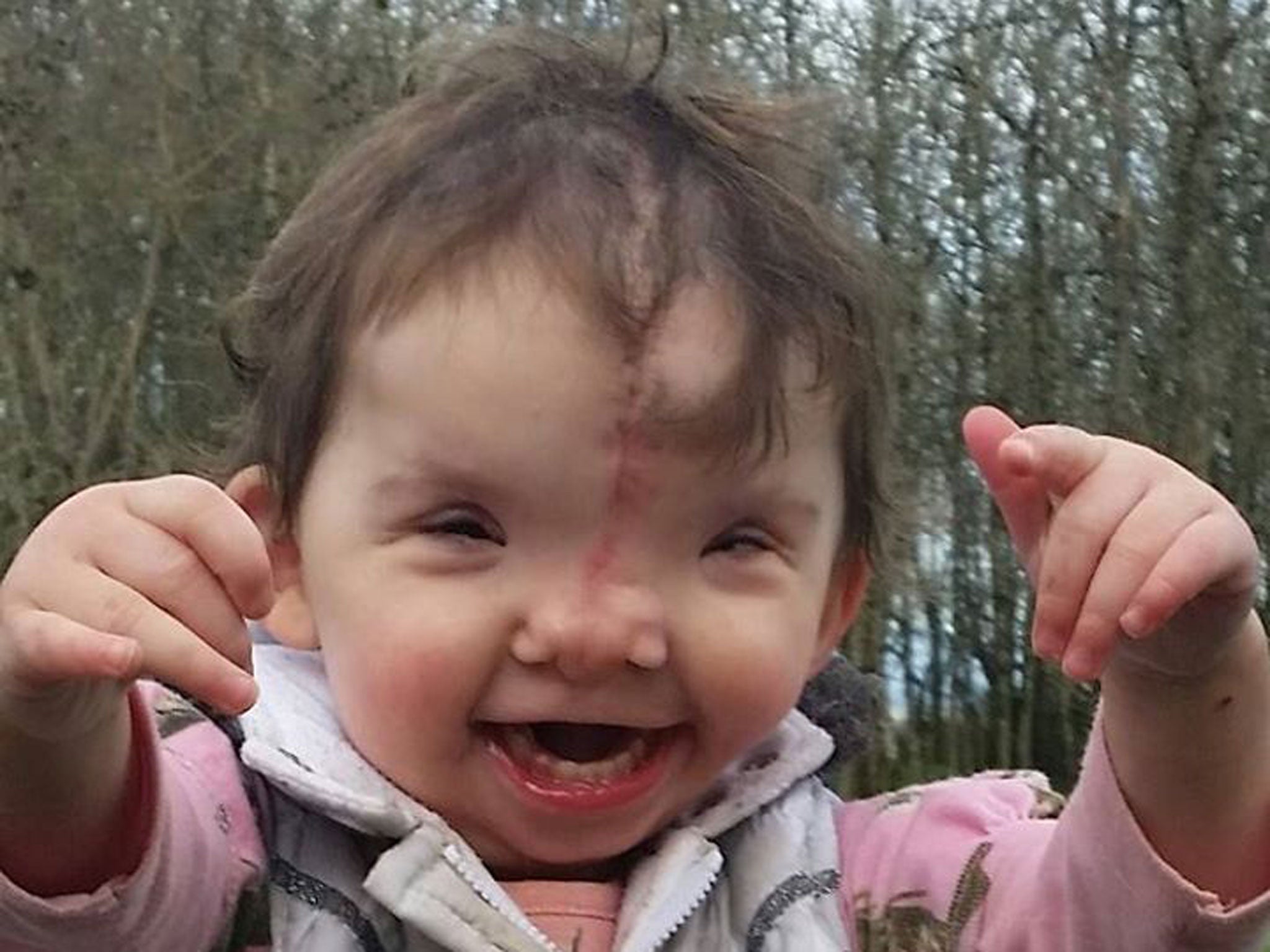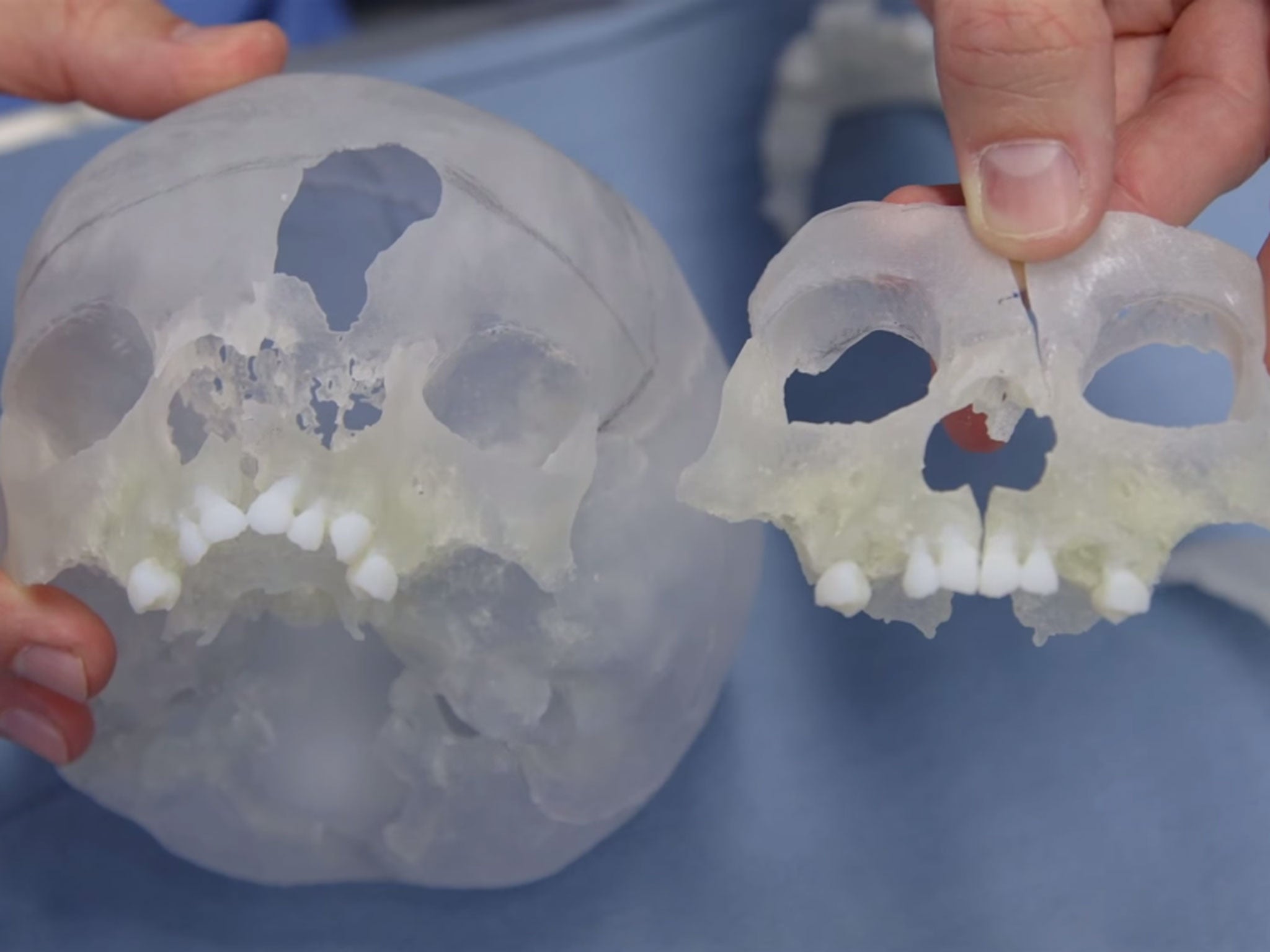Violet Pietrok: Surgeons use 3D printing to reshape toddler's face
Violet was born with a rare congenital condition

A two-year-old girl is back to her mischievous self, six months after surgeons used revolutionary 3D printing techniques to reshape her face.
Violet Pietrok’s mother, Alicia Taylor, told ABC news: "She’s fantastic. She’s so happy…all the time. If she’s not smiling, she’s generally asleep or throwing a fit."
The toddler was born as a twin, but unlike her sister, she suffered a rare defect called Tessier facial cleft As the bones that normally fuse to join form the foetal face did not connect, Violet was left with a large gap in the centre of her face and with no cartilage in her nose.
Last October, Violet underwent six-hour-long major surgery at Boston’s Children Hospital with both a plastic surgeon and neurosurgeon.

Before the operation, doctors printed a 3D model of Violet’s skull based on magnetic resonance imaging pictures, the New York Times reported. Further models allowed surgeon Dr John Meara to test the method to adjoin Violet’s face, while not interfering with her brain or nerve functions.
In the past, such models would have cost thousands of pounds and would have taken weeks to build. But Dr Peter Weinstock at the children's hospital was able to produce four highly accurate models for $1,200 (£813) according to the New York Times.
"The value of the model like this is huge," Meara explains in a video for Boston Children's Hospital. "This gives me the ability to see on this model better than I will in the operating room."
A complication in February meant Violet had to be operated on once more, but Ms Taylor told ABC News that Violet is once again doing well, and the family has “high hopes” there won’t be any further problems.
Ms Taylor added that she hopes that by sharing Violet's story, less people will be shocked by facial deformities. She has also set up a Facebook page to allow people to follow Violet's journey.
Join our commenting forum
Join thought-provoking conversations, follow other Independent readers and see their replies
0Comments